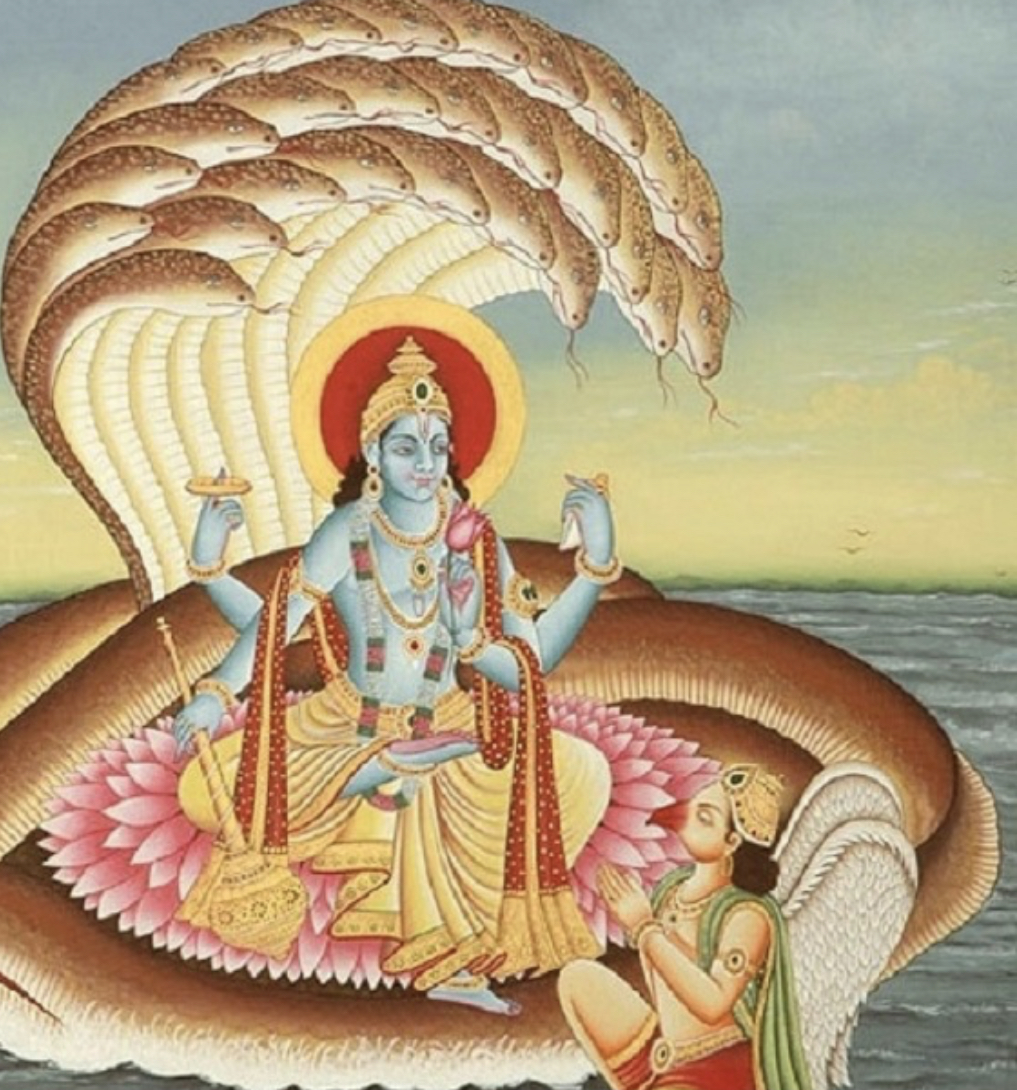In yoga, we learn to relax and calm the mind to feel the essence of our true nature. This peaceful liberated state may also occur spontaneously, just by communing with nature and connecting with its live elegance. Both can inspire an awakening, but how do we make it last? Venturing into the lotus wilderness with the Yamas and Niyamas reveals more about living in our true nature.
Buddhist philosopher, Shinzin Young, calls the presence of our true nature an unobstructed clarity and equanimity. It’s easy to loose touch with it when physical, emotional and mental stresses become our compass. How do we reside in the abiding traits of such fullness and still manage the trials of humanity? Well, stay on your mat but don’t stop there, walk with a lotus.
The Lotus
The lotus flower, is one of the most sacred symbols of Eastern culture. Beauty, growth, and self-actualization are a few of its notable embodiments. Beyond its beauty, what elevates this legendary water lily is its ability to survive. The seed can endure thousands of years without water and tolerate intense temperatures. Its unparalleled durability and unique daily life cycle is why its often associated with awakening and grace. Every evening the lotus folds up and submerges, resurfacing at sunrise as a colorful bloom. A redemption that speaks of transcendence.
The Journey of the Lotus
Start with the image of a seed that drops from a pod sinking to the bottom of a sluggish pond. Swaddled in mud, the neophyte takes root and sprouts. Anchored by an eager stem its leaf travels upward through dubious conditions, breaking the surface and waxing clean. It touches the atmosphere and greets the sun as the bud spreads its petals like a broad smile inside a beautiful flower.
As seekers, this maturing of the lotus can resemble our own journey of growth and cognition. The mind suffers such murky misadventures through a myriad darknesses. Despite the juxtaposition of a rise to clarity in the form of a beautiful flower, our struggles are also juxtaposed by the profound trust that change itself will light the way.
Travel Light
An important piece of traveling inward is eliminating excess baggage. What can we dispose of that no longer serves us and what do carry as a means for solid footing? When we align with enough space and silence to steady mind, the lighter we feel. Our sojourn into the lotus wilderness is about shedding the layers toward our true nature. It is the solitary pursuit of lifting our refection as grace back into the world.
The Yamas and Niyamas
Here’s a packing list to consider, The Yamas and Niyamas. They are the first two limbs of the Eight Limbs of Yoga. Since we are traveling light, we will take a look at some subtler forms of these ideals.
The Yamas refer to social conduct and self discipline. Our thoughts, words, and actions, particularly with other people, carry weight including the shades of conduct less obvious.
The Yamas Nonviolence, truthfulness, non-stealing, moderation, non-possessiveness.
- Ahimsa means non-harming or nonviolence. Introspectively, Ahmisa plays a conscious role at the level of thought. How often are we conflicted with ourselves and others? Is our mind-talk constantly fighting with life? If we are unwilling to look at our own inner life and how we manage it, we may be violating someone else’s simply by thinking we know better. It takes courage to be lenient of ourselves and others. There’s so much humor in being human.
- Staya (truthfulness) speaks on many levels, yet the voice that cries from the depths of our being is often silenced. Wrapped in stories, identities, and beliefs, we expend a lot of energy pretending. The unadulterated quality of who we are is the one everyone benefits from because true nature has fluidity. It is the great emulsifier of what is genuine including other points of view. Truthfulness asks if we see things as they are or as “we” are?
- Asteya (not stealing.) What about stealing the present moment by living in the past or dreading the future? A conversation can be robbed by not paying attention. We steal someone’s wish to connect by being flip or glib. Stealing a heartfelt overture with a clever parlay making it about ourselves robs us both of something precious.
- Brahmacharya (moderation of the senses.) In a culture of overachieving and indulgence, chronic exhaustion practically seems like a badge of honor, however; we pay the price of excess with our health and well being. Is obsessing with how much we can accomplish really worth it? In yogic thought, there is the moment when we reach the perfect limit of “enough.” We recognize it and cultivate it as a discipline. Conditioned habits and emotions become a need like an addiction. It can come down to something as simple as ice cream. Are you having an ice cream or is the ice cream having you? Has wine, work, spirituality, or your cell phone become your taskmaster?
- Aprarigraha or nonpossessiveness, can also be interpreted as non-attachment, non-greed, not clinging or simply letting go. It’s natural to want to hold on to happy times and sentimentalities except when we expect it. The nature of things is to change and failing to let them change makes us discontent.
The Niyamas: Purity, contentment, self-discipline, self-study, self-surrender.
A good way to think about the Niyamas is to frame them as inward actions or observances. Rolf Sovik of Yoga International says the opportunities to practice rise every day.
- Saucha (cleanliness) carries a two-fold meaning by paying attention to our thoughts and words because it brings clarity to our senses. And, the self brightens by keeping the body clean and the space in which it occupies. Saucha looks different for each of us and it doesn’t have to be earth shattering or weird. Maybe it’s more exercise, a better diet or keeping the house tidy.
- Santosha (contentment) is an understated gratitude no matter how cold the winds. Without pardoning the misery that surrounds us, Santosha is not a spiritual by-pass to ignore reality in favor of positive thinking. It a courageousness in finding peace in the chaos and a willingness to be afraid with a fierce equanimitable heart.
- Tapas, literally means “heat.” (Self-discipline) Tapas is the determined characteristic of strength. For instance, the effort in a daily practice of asana, pranayama and meditation generates heat like a small controlled burn. By paying attention to the kind of food we eat, exercising and observing mindfulness, we turn up the heat to remove unwanted pounds, lazy habits, and toxic thoughts. It is withstanding the discipline rather than the habitual state of semi-consciousness. An old saying asks if we have the courage to stay in the fire until a blessing is found. In the heat of a crisis, Tapas ignites strength in hardship. It can transform us into something of great profoundness. Yoga master, Deborah Adele says, “a crisis is a terrible thing to waste.”
- Svādhyāya or self-study follows the paradigm of study itself. To be the eternal student of self-realization with texts that serve a higher purpose. It could be a passage from a yoga sutra or a faith based philosophy. Before committing to emails and the news, let some slice of wisdom be the start of your day.
- Ishvara Pranidhana (self-surrendering.) Be it to a higher power or to yourself, it is probably the most difficult concept to embrace because it is a sum greater than its parts. To connect with self, others, and the universe in a collective state is a type of atomic energy. Surrendering to the hand of unlimited possibility, we are partnered to life in a dance.

The way we physically and mentally approach life can shine on our true nature, or not. Practicing the subtleties of the Yamas and Niyamas takes us to another level of conscientiousness with an opportunity for the seeds of our lotuses to sprout and grow. The path is not a straight line nor does look like anything we think it should. Begin with an intension to clear the way, travel light. The lotus wilderness promises full and honest contact.
References:
Adele, D. (2009). The Yamas & Niyamas: Exploring Yogas’s Ethical practice.
On-Word Bound Books LLC. Duluth, Minnesota.
C.L. “Can you show courage and stay in the fire until you find the blessing.”
Mirsky, K. (2021). Introduction to Understanding Your True Nature. https://yogainternational.com/article/view/introduction-to-understanding-your-true-nature. Yoga International.
Newlyn, E. (2021). Ekhart Yoga. Eight Limbs of Yoga https://www.ekhartyoga.com/articles/philosophy/the-8-limbs-of-yoga-explained
Young, S. (2006). What is Mindfulness? ver1.3.doc. Created: 7/29/2006 • Modified: 5/24/2012





